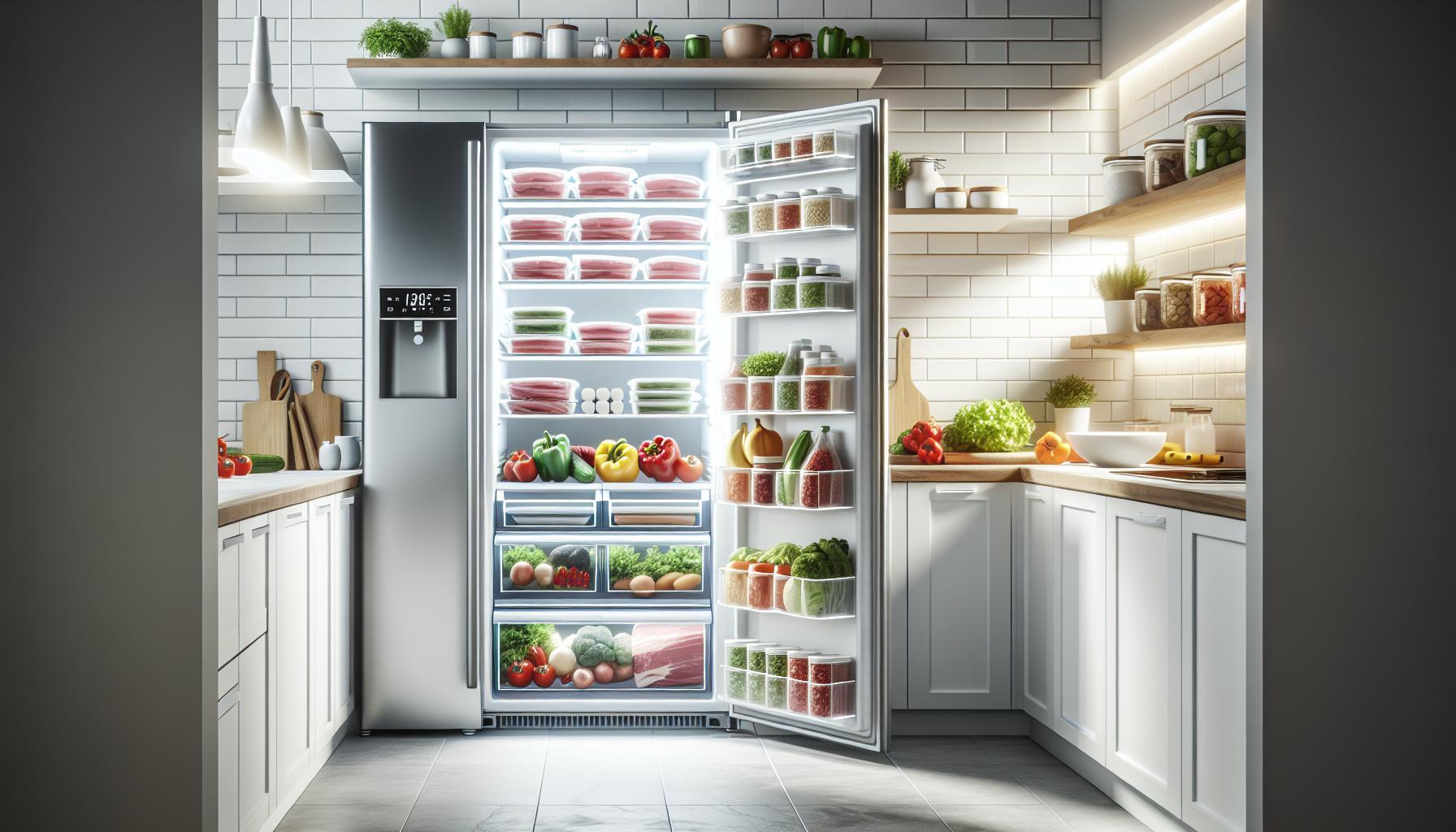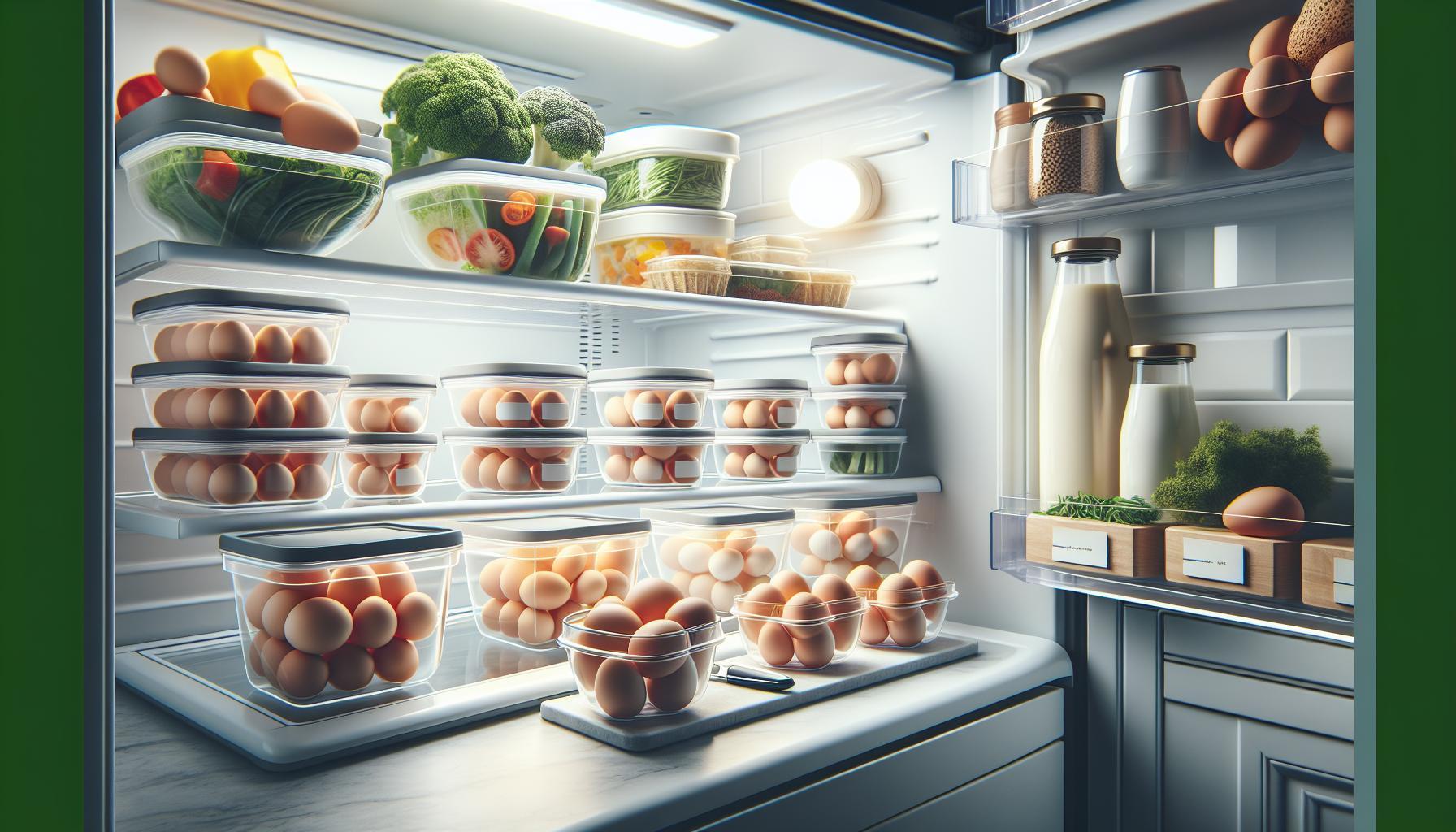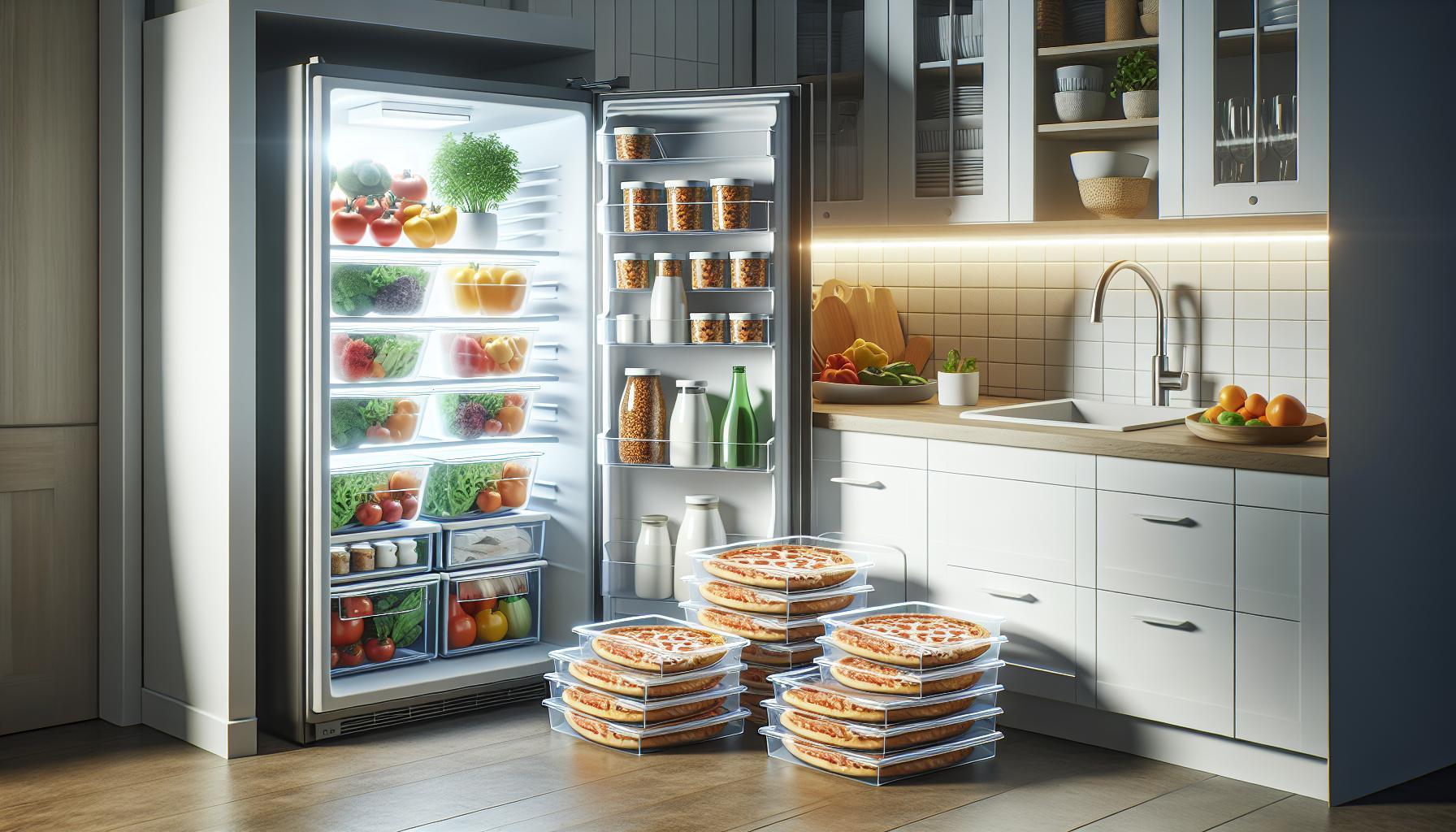Did you know that perishable food can become unsafe to eat within just a few hours without refrigeration? Whether it’s due to a power outage or a fridge malfunction, understanding how long food can safely last in these situations is crucial for your health and safety.
In this article, we will explore essential guidelines and timeframes for keeping your food safe and preventing foodborne illnesses. You’ll learn practical tips to help you assess your food’s safety during outages, ensuring you can make informed decisions and avoid potential health risks. With the right knowledge, you can navigate power interruptions with confidence, keeping your meals safe and your mind at ease. Let’s dive in and stay informed!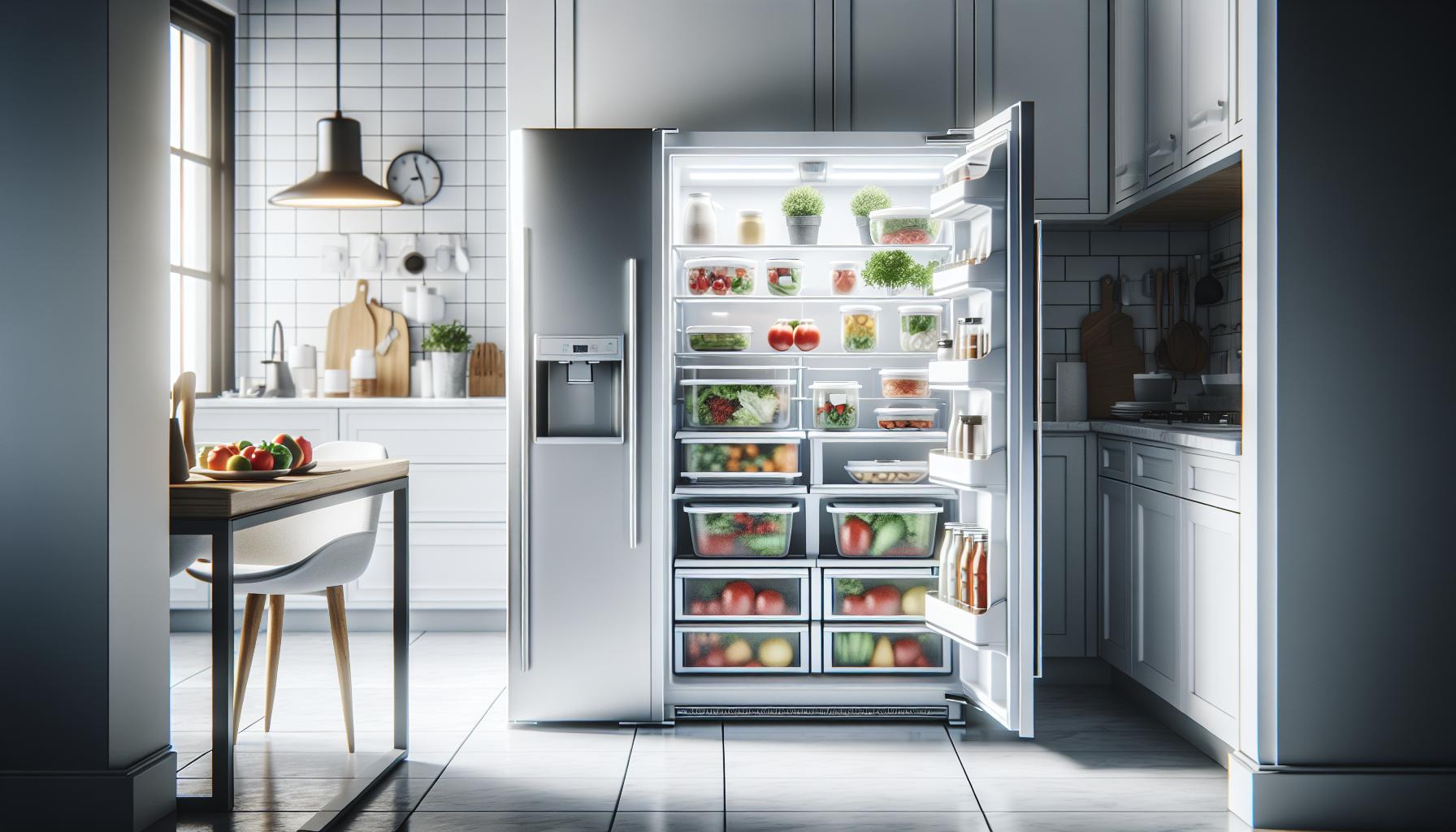
How Long Can Food Last in the Fridge Without Power?
In the unfortunate event of a power outage, understanding how long food can remain safe in the refrigerator is crucial for preventing foodborne illnesses. Generally, food can last for up to 4 hours in the fridge without power, as long as the door remains closed. Keeping the refrigerator door shut minimizes temperature fluctuations, allowing the food to stay cold longer. This timeframe is essential when assessing the safety of your perishables, especially in warmer temperatures.
To estimate the safety of your food, it’s important to know the temperature inside your refrigerator. When the temperature rises above 40°F (4°C), certain foods can begin to develop harmful bacteria. Food safety experts recommend checking the temperature with a food thermometer if possible. If the refrigerator has been without power for more than 4 hours and the temperature is above 40°F, it’s a good idea to discard perishable items such as meat, dairy products, and prepared foods.
In a organized manner, the following food storage guidelines can help you quickly assess what to keep and what to toss:
| Food Type | Safety Duration Without Power |
|---|---|
| Meat, Poultry, and Fish | Discard after 2 hours above 40°F |
| Dairy Products | Discard after 2 hours above 40°F |
| Eggs | Discard after 4 hours above 40°F |
| Fruits and Vegetables | Generally safe, but check for spoilage |
| Prepared Foods | Discard after 2 hours above 40°F |
If you anticipate a longer outage, consider placing ice in your refrigerator to help maintain a cold temperature. Using bags of ice or frozen gel packs can be effective in ensuring food remains at a safe temperature, extending its life beyond the typical timeframes. Remember that when in doubt, it’s always better to err on the side of caution and discard any questionable food items to protect your health.
Understanding the Science of Food Preservation
Understanding the delicate balance of food preservation is vital, especially when faced with unexpected power outages. At temperatures above 40°F (4°C), food can become a breeding ground for harmful bacteria that lead to foodborne illnesses. The science behind food preservation revolves around controlling temperature, humidity, and exposure to air, all crucial factors that help keep food safe and fresh. For instance, refrigeration slows down bacterial growth significantly, effectively keeping food safe for a limited time during power interruptions.
When the electricity goes out, the first rule to follow is to minimize the frequency of opening the refrigerator door. Each time the door is opened, cold air escapes, raising the interior temperature. A full refrigerator retains cold better than one that is less stocked, so considering how you organize your fridge can enhance food safety during an outage. It’s also essential to know that solidly frozen items can usually maintain safety for a longer period than fresh foods; a full freezer can keep food safe for up to 48 hours if unopened.
In the context of food preservation, it’s useful to keep a few practical strategies in mind. Utilizing ice packs or bags of ice in the fridge can create a buffer against rising temperatures and sustain safe conditions for as long as possible. Additionally, for future planning, having a thermometer accessible can help you quickly assess whether food has been kept at safe temperatures. Remember that when in doubt about food safety, it is better to err on the side of caution and discard any items that may have been compromised. Your health should always take precedence over the potential waste of food.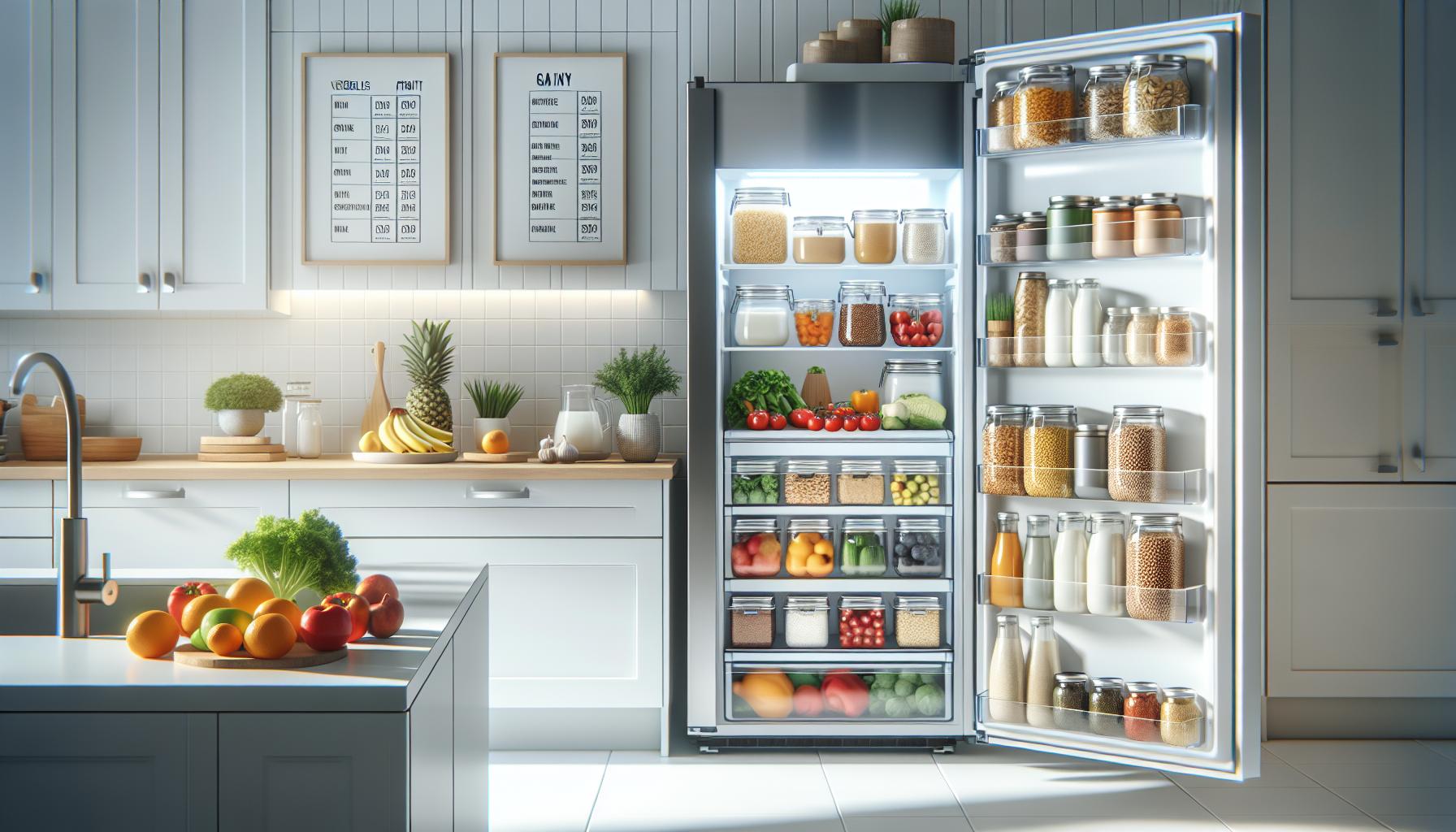
Essential Guidelines for Food Storage Duration
In the face of unexpected power outages, understanding food storage duration is crucial to ensuring your safety and minimizing food waste. The USDA emphasizes that when the power goes out, the refrigerator temperature rises above 40°F (4°C), and food safety becomes a pressing concern. Knowing how long food can reasonably last without power allows you to prioritize and manage what to keep and what to discard.
For optimal food safety, consider these general guidelines regarding storage durations during a power outage:
Storage Timeframes
- Refrigerator: Generally, food in a refrigerator will remain safe for about 4 hours if unopened. If you have a full fridge, it may be able to last a bit longer.
- Freezer: A full freezer can maintain a safe temperature for up to 48 hours if unopened. A half-full freezer will keep its contents safe for about 24 hours.
To aid in decision-making during an outage, have a thermometer handy to monitor temperatures. If food has been above 40°F for over 2 hours, it’s best to assess the safety of each item. Particularly perishable items, like dairy products, seafood, and meats, should be discarded if they’ve exceeded this timeframe.
Specific Categories and Their Durations
| Food Category | Safe Duration Without Power |
|---|---|
| Meat and Poultry | 1-2 hours above 40°F |
| Dairy Products | 1-2 hours above 40°F |
| Eggs | 1-2 hours above 40°F |
| Fruits and Vegetables | Up to 4 hours |
| Cooked Foods | Up to 4 hours |
It’s also important to remember that canned goods and dry goods are typically safe to eat after an outage, as they do not require refrigeration. However, when in doubt, follow the safety mantra: “When in doubt, throw it out.” Prioritizing health over salvaging food can save you from potential foodborne illnesses. Stay informed about the specific time limits for various food categories, and you can navigate power outages with greater reassurance.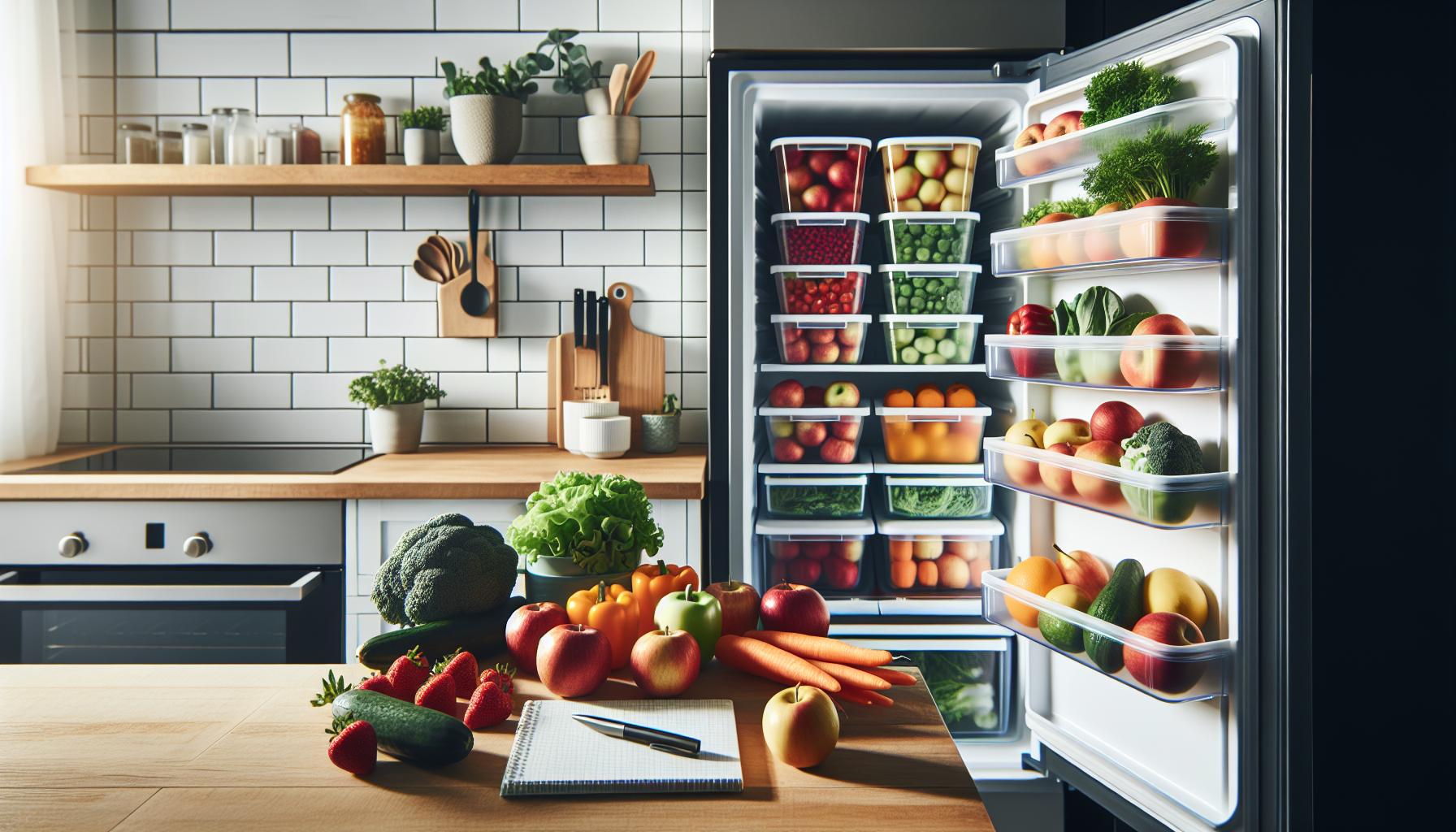
Fruits and Vegetables: Safe Time Limits
In the realm of food safety, fruits and vegetables often occupy a unique space due to their natural resilience. These essential staples provide nutrition and variety to our diets, but during a power outage, their freshness can hang in the balance. Understanding how long these perishable items can last without refrigeration is crucial for maintaining food safety and minimizing waste.
Generally, fruits and vegetables can remain safe for consumption for up to 4 hours when the refrigerator is opened during a power outage. If the door remains unopened, this timeframe may extend slightly; a full fridge could keep its contents cooler for longer, potentially preserving the quality of produce. However, once the temperature rises above 40°F (4°C), the shelf life of these items rapidly declines, especially for those that are more perishable, such as leafy greens, berries, and fresh herbs.
To maximize the safety of your fruits and vegetables, it’s advisable to be aware of their specific characteristics. Apples, oranges, and root vegetables like potatoes and carrots tend to have a longer shelf life and can often withstand slight temperature increases better than more delicate options. Conversely, items like leafy salads and ripe berries should be consumed or discarded sooner if they’ve been above the safe temperature threshold for an extended period.
When assessing your produce after an outage, look for visual cues as well. If fruits and vegetables appear wilted or show signs of spoilage, such as discoloration or an off smell, it’s best to err on the side of caution and dispose of them. Remember, adopting the safety mantra of “When in doubt, throw it out” is essential in preventing foodborne illnesses. By staying informed about the time limits and characteristics of your produce during power outages, you can ensure that you continue to enjoy safe and nutritious foods while minimizing waste.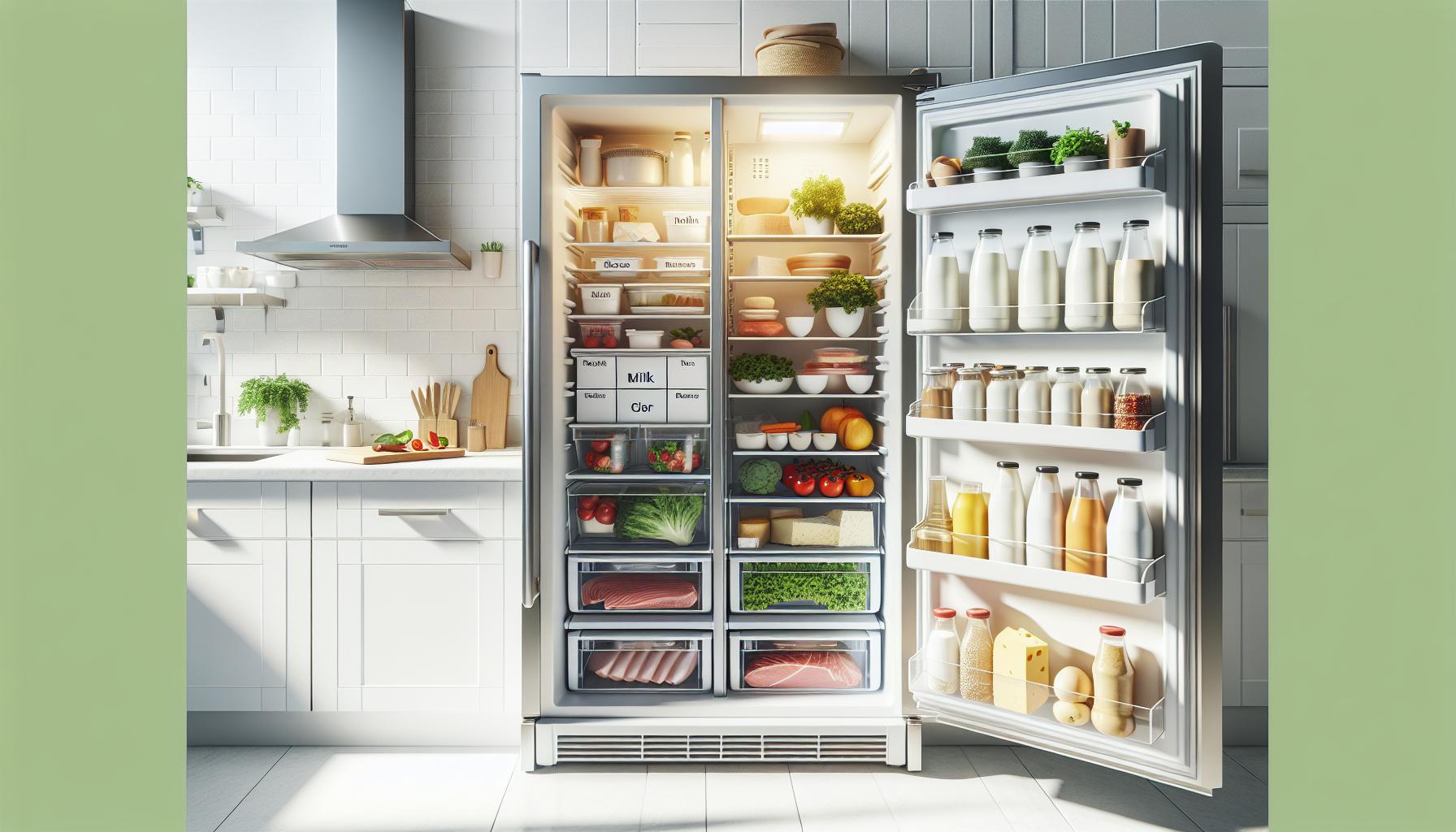
Meat and Dairy: Risk Assessment and Safety
During a power outage, understanding the behavior of meat and dairy products in your refrigerator is critical for maintaining food safety. These items are particularly perishable and can pose significant risks if not handled correctly. Both meat and dairy begin to lose quality and safety once the temperature rises above 40°F (4°C). Generally, they can safely remain unrefrigerated for about 4 hours if the fridge door remains closed, though this timeframe can vary based on the amount of food stored and the insulation properties of your refrigerator.
To assess the safety of these perishable items after a power outage, keep the following tips in mind:
Key Safety Considerations
- Temperature Monitoring: If the temperature inside the refrigerator exceeds 40°F, meat and dairy products should be discarded after 2 hours. This is because harmful bacteria can proliferate rapidly at these temperatures, increasing the risk of foodborne illnesses.
- Visual and Sensory Checks: Examine meat and dairy visually and by smell before deciding to keep or discard. If you notice any discoloration, sliminess, an off-odor, or foul smell, it’s safest to throw them away, adhering to the principle of “When in doubt, throw it out.”
- Specific Product Types: Different types of meat and dairy have varying levels of risk. Whole cuts of meat, for instance, may have a longer safe time than ground meat, which spoils faster. Similarly, soft cheeses and products made with raw milk are more sensitive than hard cheeses.
Safe Discard Guidelines
| Food Type | Time without Power | Action |
|---|---|---|
| Raw Meat (Beef, Poultry, Pork) | Up to 4 hours (unopened) | Safely store if still below 40°F; discard after 2 hours if above. |
| Cooked Meat | Up to 4 hours (unopened) | Safely store if still below 40°F; discard after 2 hours if above. |
| Dairy Products (Milk, Yogurt) | Up to 4 hours (unopened) | Safely store if still below 40°F; discard after 2 hours if above. |
| Soft Cheeses (Ricotta, Cream Cheese) | Up to 4 hours (unopened) | Safely store if still below 40°F; discard after 2 hours if above. |
| Hard Cheeses (Cheddar, Parmesan) | Up to 4 hours (unopened) | May last longer; inspect for spoilage before consumption. |
By following these guidelines and remaining vigilant during power outages, you can minimize food safety risks and ensure that your meat and dairy products are safe for consumption. Always prioritize safety and err on the side of caution to protect your health.
Prepared Foods: Shelf Life Without Power
Prepared foods, particularly leftovers and dishes that have been cooked, require careful consideration during a power outage to prevent foodborne illnesses. These items generally have a shorter shelf life than raw ingredients due to their varying moisture levels and the potential for bacterial growth. When the power goes out, prepared foods can typically remain safe as long as the refrigerator stays at or below 40°F (4°C). However, the clock starts ticking the moment the temperature rises above this threshold.
Most prepared foods can be safely consumed if they have been stored under proper conditions for up to 4 hours. After this period, the risk of harmful bacteria, such as Salmonella or Listeria, increases significantly. Whether it’s a pasta dish, a casserole, or cooked vegetables, the same guideline applies: if the power outage extends beyond 2 hours and the food remains above 40°F, it’s best to toss it out, even if it looks and smells okay. Bacteria can thrive unnoticed, making it crucial to prioritize safety.
Safe Discard Guidelines for Prepared Foods
| Food Type | Time without Power | Action |
|---|---|---|
| Cooked Lasagna or Casserole | Up to 4 hours (unopened) | Safely store if still below 40°F; discard after 2 hours if above. |
| Cooked Vegetables | Up to 4 hours (unopened) | Store if below 40°F; discard after 2 hours if above. |
| Soups and Stews | Up to 4 hours (unopened) | Store if below 40°F; discard after 2 hours if above. |
| Prepared Salads (e.g., potato, egg) | Up to 4 hours (unopened) | Store if below 40°F; discard after 2 hours if above. |
Preventive measures during potential outages include keeping the fridge door closed as much as possible to maintain a lower temperature and using thermometers to monitor internal temperatures. If you suspect that a power outage may last longer, consider investing in ice packs or dry ice to help keep your refrigerator cold longer. Remember, when in doubt, it’s better to err on the side of caution and discard questionable foods to protect your health.
Maximizing Food Safety During Power Outages
In the event of a power outage, knowing how to maximize food safety is crucial to prevent the risk of foodborne illnesses. When the refrigerator temperature rises above 40°F (4°C), the internal clock starts ticking, significantly reducing the safe time frame for food storage. To make the most of the situation, keep the refrigerator door closed as much as possible; this simple action helps maintain a lower temperature for a longer period. Consider using a thermometer to track the internal temperature of your fridge, which will provide you with critical information regarding the safety of your food.
If you anticipate a prolonged outage, there are several practical steps you can take to extend the life of your food. Firstly, filling empty spaces in the refrigerator with ice packs can help absorb heat and maintain a cooler temperature. Additionally, dry ice may be used judiciously, though it’s essential to handle it carefully and ensure proper ventilation. For those with accessibility to alternative cold sources, such as coolers, moving perishable items temporarily can be an effective strategy.
When deciding what to keep and what to discard after an outage, a clear set of guidelines can aid your judgment. Generally, food that has remained below 40°F can be safely consumed within four hours of the power going out. However, if the temperature in the refrigerator exceeds this threshold for more than two hours, it’s a good practice to err on the side of caution and discard the food. This is especially true for high-risk items like meats, dairy products, and cooked dishes, which benefit from stricter adherence to safety measures.
Lastly, remember that spoilage can be a silent threat. Foods that appear and smell fine may harbor harmful bacteria, making it crucial to rely on time and temperature guidelines rather than sensory evaluation. If unsure, trusting your instincts and prioritizing food safety will help protect your health during unexpected outages. By staying informed and proactive, you can minimize the impact of power disruptions on your food safety.
What to Do With Food After an Outage
In the wake of a power outage, understanding how to handle your food can mean the difference between safe consumption and potential foodborne illness. When the power goes out and your refrigerator loses its cool, a few key guidelines can help you make informed decisions about what to keep and what to discard, ensuring the safety of your family’s meals.
Begin by assessing the temperature of your refrigerator when the power resumes. If it has remained below 40°F (4°C) and the outage was less than four hours, most perishable items should be safe to consume. However, if the power was out for more than two hours and the temperature exceeded 40°F, it’s safer to throw out perishable foods like meat, poultry, fish, eggs, and dairy products. These items are particularly vulnerable to bacterial growth, and consuming them can pose serious health risks.
If you are uncertain about specific items, follow these guidelines for particular categories:
- Meat and Poultry: Discard if above 40°F for more than 2 hours.
- Dairy Products: Discard if above 40°F for more than 2 hours.
- Cooked Foods: Discard if they have been above 40°F for more than 2 hours.
- Fruits and Vegetables: Most are safe for a short period; discard any that show signs of spoilage.
For any prepared dishes like casseroles or leftovers, if they have been held above 40°F for more than two hours, it’s best to err on the side of caution and toss them out. Even if the food appears unaffected, the invisible threat of bacteria means it’s safer to let it go.
Once you’ve made these important decisions, consider your next steps. If you plan for potential outages, stock your fridge with ice packs or a few bags of ice in advance. This preparation can buy you extra time in the event of a power failure. For future outages, regularly organize your freezer (if it remains closed, food can often remain frozen for 48 hours) and consider using a thermometer to check temperatures regularly.
By following these best practices, you can minimize food waste and ensure your meals remain safe for consumption even after unexpected disruptions.
Signs of Spoilage: When to Discard Food
When the power goes out, knowing how to identify spoilage can significantly reduce the risk of foodborne illness. While many foods may appear normal, invisible bacteria can proliferate rapidly once the temperature rises above safe levels. One of the first indicators of spoilage is temperature: foods should be discarded if they’ve been above 40°F (4°C) for more than two hours.
Visual and sensory cues are critical in assessing whether food is still safe to eat. For perishable items like dairy and meats, be alert for any discoloration or unusual textures. Similarly, check for changes in odor; any sour or off smells are clear signs that the food should be discarded. Here are some specific signs to watch for in different categories:
- Meat and Poultry: If the meat has a slimy texture or off-putting odor, it’s best to throw it away.
- Dairy Products: Sour smell, curdling, or any signs of separation indicate spoilage.
- Fruits and Vegetables: Look for mold, excessive softness, or discoloration. Discard if they appear mushy or have dark spots.
- Leftovers and Prepared Foods: If they’ve been above 40°F for longer than two hours or if there are signs of spoilage such as an unusual smell or changes in texture, it’s safer to discard them.
In some cases, it’s crucial to remember that visual inspections alone may not guarantee safety. Bacteria can sometimes grow without any visible signs or smells. Therefore, if there’s any doubt about the safety of an item, it is always better to err on the side of caution and discard it. By keeping a keen eye out for these signs of spoilage, you protect your health and ensure that your meals remain safe even when conditions are less than ideal.
Best Practices for Emergency Preparedness
Preparing for power outages can make a significant difference in food safety and waste management. An essential step is creating an emergency kit that includes not only food but also supplies that help maintain food safety. It is advisable to have a thermometer handy, which can help you monitor the temperature inside your refrigerator and freezer to ensure that food remains at safe levels.
Another effective practice is to stock up on non-perishable food items, such as canned goods, grains, and dried beans, which don’t require refrigeration. Consider freezing containers of water or ice and storing them in the freezer. They serve a dual purpose: providing cold storage and giving you a visual gauge of how long the power has been out; once the ice melts, you are on notice that the fridge will start losing its safe temperature.
To maximize safety during an outage, keep the refrigerator and freezer doors closed as much as possible. A closed refrigerator can keep food cold for approximately 4 hours, while a full freezer can maintain its temperature for about 48 hours (24 hours if half-full). Plan your meals and shopping trips accordingly, so you have a clear understanding of the perishables you possess, and don’t forget to label food with dates to help you track when to consume or discard items.
Finally, familiarize yourself with local resources for emergency food distribution and consider investing in a generator, which can help maintain power and extend the number of safe hours that perishable food remains viable. In essence, being proactive and knowledgeable about your food storage can alleviate stress during unexpected power outages and ensure that you and your family remain safe and healthy.
Refrigerator vs. Freezer: Key Differences in Storage Time
During a power outage, understanding the differences in food storage between your refrigerator and freezer can significantly impact food safety and minimize waste. A common misconception is that both appliances have the same endurance when it comes to preserving food, but they operate quite differently due to their temperatures and storage capabilities.
When the power goes out, your refrigerator typically maintains a safe temperature (below 40°F or 4°C) for about 4 hours, keeping food relatively safe if the door remains closed. In contrast, a full freezer can keep its temperature safe for about 48 hours; if half-full, this timeframe decreases to roughly 24 hours. This is due to the insulation properties of freezers, which are designed to hold cold temperatures longer by retaining the cold air generated by a larger volume of food, while refrigerators are not as insulated and have less thermal mass.
To maximize the longevity of food during an outage, it is crucial to know what types of food can tolerate temperature changes better than others. Items such as frozen meats and prepared foods will last longer in the freezer than in the refrigerator, making it beneficial to prioritize the use of refrigerated items first to minimize spoilage. If your food starts to rise above 40°F, it’s best to consume or cook it immediately to ensure safety, especially with perishable items like dairy or fresh produce.
In summary, keeping the doors closed, understanding the timeframes different appliances can maintain safe temperatures, and using food in the refrigerator first can help you manage your food supply more effectively during outages. Proper preparation and knowledge can significantly alleviate concerns during unforeseen power disruptions.
Common Myths About Food Safety During Outages
Misunderstandings about food safety during power outages can lead to unnecessary food waste and health risks. One of the most prevalent myths is that all food can be safely consumed if it looks and smells fine. However, harmful bacteria can proliferate in perishable foods even before visible changes occur. Ensuring safety during outages hinges on more than just sensory checks; the temperature and duration of unsafe exposure play crucial roles.
Another common misconception is that if the outage lasts less than a day, all food is safe. In reality, food in the refrigerator remains at safe temperatures for only about four hours. Foods stored above 40°F for too long can harbor dangerous pathogens. For example, foods such as cooked meats, dairy products, and certain cooked vegetables should not be consumed if they have been above this threshold for more than two hours.
Additionally, many believe that keeping the refrigerator door closed guarantees the safety of food indefinitely. While it’s true that every second counts and a closed door helps maintain its internal temperature longer, it won’t prevent spoilage forever. After four hours, the risk of foodborne illness increases significantly.
Lastly, there is a myth specifically about freezers. People often think that food can be refrozen safely after thawing during an outage. While there are exceptions, the safest guideline is to only refreeze food if it still contains ice crystals and feels as cold as 32°F. Once food has completely thawed, it should be cooked immediately or discarded to ensure health safety.
Understanding these myths is essential for making informed decisions about food safety during power outages, ultimately helping you protect your health and minimize waste.
Frequently asked questions
Q: How long can food last in the fridge without power?
A: Food in the fridge can typically last around 4-6 hours without power, depending on various factors like the refrigerator’s insulation. After this period, the temperature may rise above 40°F, leading to spoilage. For more details, refer to the section on “Understanding the Science of Food Preservation.”
Q: What to do if the fridge loses power?
A: If your fridge loses power, keep the door closed to maintain a cooler temperature. Check the food for safety after 4 hours. Discard any food that has been above 40°F for more than 2 hours. For specific guidelines, visit the “Signs of Spoilage: When to Discard Food” section.
Q: Can I eat food that has been in a warm fridge?
A: Food that has been at temperatures above 40°F for longer than 2 hours should not be eaten as it may harbor harmful bacteria. Always prioritize safety and check for signs of spoilage.
Q: How can I tell if my fridge food is spoiled?
A: Signs of spoilage include off-smells, changes in color, and unusual textures. If in doubt, it’s safer to throw it away. For detailed signs, refer to “Signs of Spoilage: When to Discard Food.”
Q: What types of food spoil the fastest without refrigeration?
A: Dairy products, meats, and cooked foods spoil the fastest without refrigeration, usually within 2-4 hours. Items such as fruits and vegetables can last longer, but it’s essential to monitor their condition closely.
Q: How can I prolong food safety during a power outage?
A: To prolong food safety, keep your fridge door closed, store ice packs or bags of ice in the fridge, and consider using a cooler for staples. For emergency preparedness tips, check the “Best Practices for Emergency Preparedness.”
Q: What should I keep in mind during a power outage?
A: Always keep track of food storage times and temperatures, and have a thermometer handy to monitor the fridge’s internal temperature. This helps you make informed decisions on food safety.
Q: Why is it important to check food temperatures during a power outage?
A: Checking food temperatures helps determine if food remains safe to eat. Food above 40°F for more than 2 hours is generally unsafe, so it’s crucial for maintaining health during outages. For more on temperature guidelines, see “Essential Guidelines for Food Storage Duration.”
Concluding Remarks
In summary, understanding how long food can last in the fridge without power is crucial for maintaining safety and avoiding foodborne illnesses. Remember, perishable foods generally last only about 4 hours at room temperature; beyond that, it’s best to discard them. Don’t leave your safety to chance-familiarize yourself with our detailed guidelines on food storage and safety practices. For further resources, check out our articles on food storage tips and safely handling food during a power outage to stay informed.
Now is the time to act: subscribe to our newsletter for real-time updates on food safety tips and potential recalls, ensuring you have the most current information. Share your thoughts in the comments below, and let us know how you prepare for power outages. Stay safe, stay informed, and explore our site for more essential information on food safety and health!



